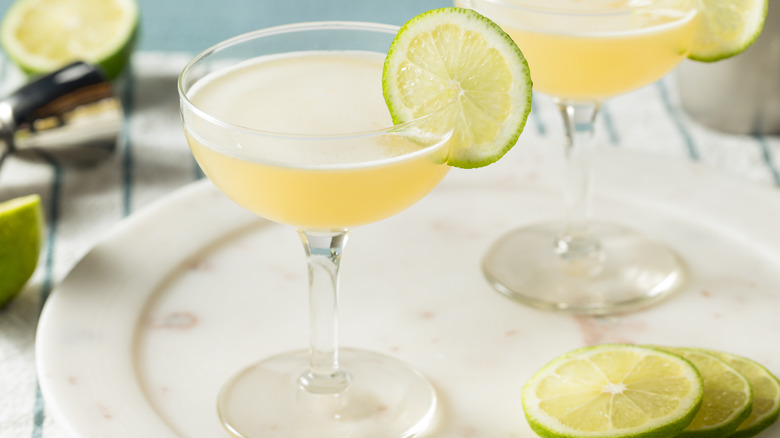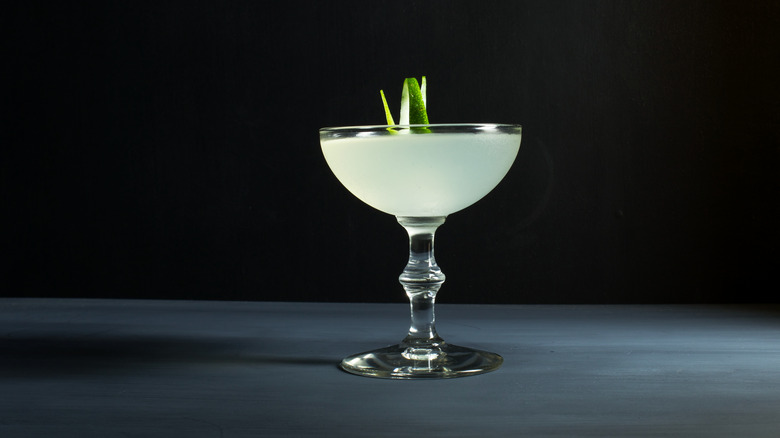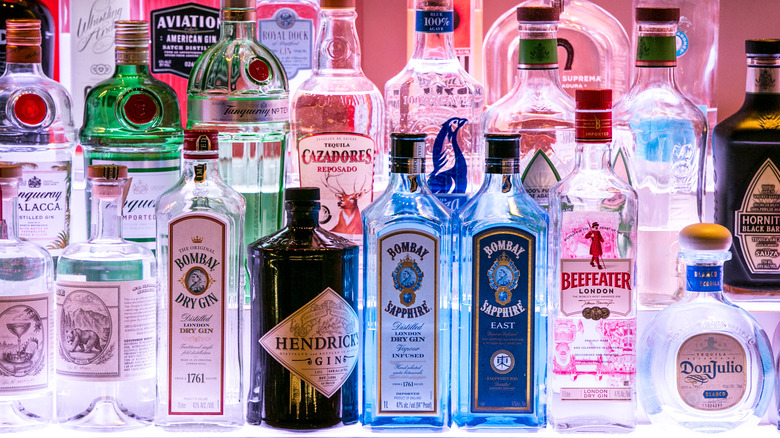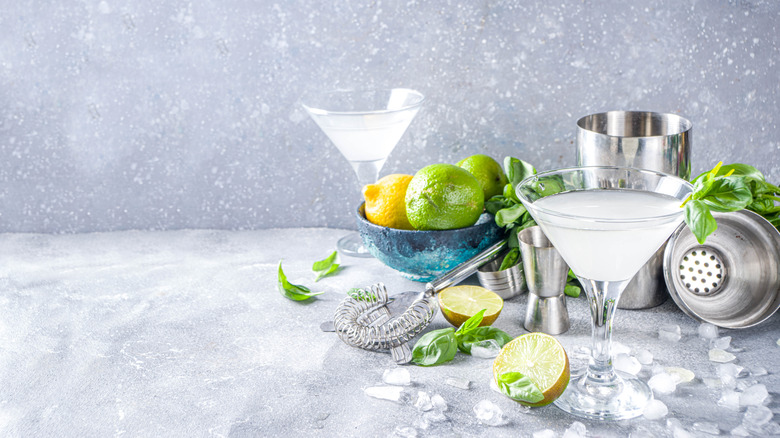What Exactly Is A Gimlet?
We may receive a commission on purchases made from links.
Have you ever heard of a gimlet? Although this gin-based drink is a classic cocktail, alongside old standbys such as the martini and the Old Fashioned, it's not as widely familiar as some of its counterparts. A straightforward mix of cold gin and syrupy sweetened lime juice, per The Kitchn, this refreshing cocktail is worth getting to know.
Although you may not have ordered a gimlet at the bar — yet — you may have heard it referenced before. If you were an avid reader of the Julie/Julia Project, perhaps you recall home cook Julie Powell fueling herself through another late-night Julia Child recipe with the aid of a few gimlets. Or, if you're a fan of classic literature, you may have read the recipe in Raymond Chandler's "The Long Goodbye": "half gin and half Rose's Lime Juice and nothing else" (via American Pulps).
Let's take a closer look at this simple but beguiling drink.
The history of gimlets
As with many classic foods and beverages, the gimlet has several origin stories. One of those, according to Liquor.com, is that it was invented as a survival strategy for British sailors. Legend has it that in the late 18th century, as ships trawled the seas, scurvy — in the absence of fresh citrus — was a real threat to sailors. As such, they would receive a ration of sweetened lime juice, but the best way to get them to actually drink it was to mix it with their allotment of gin. (MasterClass even credits Surgeon Admiral of the Royal Navy, Sir Thomas Gimlette, with the inspired idea.) Of course, unlike modern gimlets, at the time, they didn't have ice on the ships.
Whether or not that origin is true, gimlets did start to appear in recipe books during the golden age of cocktails. In his 1930 guide "The Savoy Cocktail Book," Harry Craddock lists a gimlet cocktail as "½ Burroughs Plymouth Gin, ½ Roses Lime Cordial" stirred and served over ice (via Difford's Guide).
What's in a gimlet?
For a straightforward drink made with two ingredients, there's a surprising amount of debate over the proper preparation of a true gin gimlet. As cited by Harry Craddock in his 1930 recipe book, "The Savoy Cocktail Book," most gimlet purists agree that the drink is made from equal parts quality gin and Rose's Lime Juice, a bottled concoction made of high fructose corn syrup and concentrated lime juice (via The Kitchn). Typically, that means about two ounces of gin per drink. According to The Back Label, the components can be shaken or stirred together until "ice cold," then served straight up in a stemmed glass of any kind.
But a more modern take on gimlets that some mixologists prefer utilizes fresh lime juice, not bottled. According to Punch, Rose's Lime "wouldn't make it past the door of any self-respecting craft cocktail bar." They advocate for the use of gin, fresh lime, and simple syrup. Some modern variations also favor a 3:1 ratio of alcohol to lime juice.
And then there are plenty of people who prefer to make gimlets with vodka instead of gin, which the Kitchn notes became popular at the end of the 20th century. In an article for the New York Times, columnist William L. Hamilton opines, "I prefer vodka, for its understatement. Gin talks too much, with its juniper bush-berry accent."
How to serve a gimlet
Now that you've gotten to know the basics of a gimlet, it's time to shake — or stir — one up at home. A refreshing cocktail that tastes slightly herbal if you choose to use gin and super-puckery from the generous amount of lime juice, bottled or fresh, this is a simple drink that pleases a wide range of palates.
Start by selecting a quality gin or vodka. Since there are only two ingredients in a gimlet, it's important that the liquor used is the best quality you can afford, as you're definitely going to taste it, according to The Manual. Of course, you can also use vodka if you prefer a more neutral flavor; some bartenders even go rogue with tequila or mezcal. If you want to go classic — and if your tastes skew towards the sweet — you can use Rose's Lime Juice. For a more modern, and tangier, drink, Liquor.com recommends using fresh lime juice alongside an equal part of simple syrup. Add the ingredients to a shaker filled with ice, shake or stir them, then strain into a stemmed glass and channel your best Betty Draper as you sip that gin down (per Architectural Digest). MasterClass points out that chilled coupes, martini glasses, and rocks glasses will all work for this cocktail.



